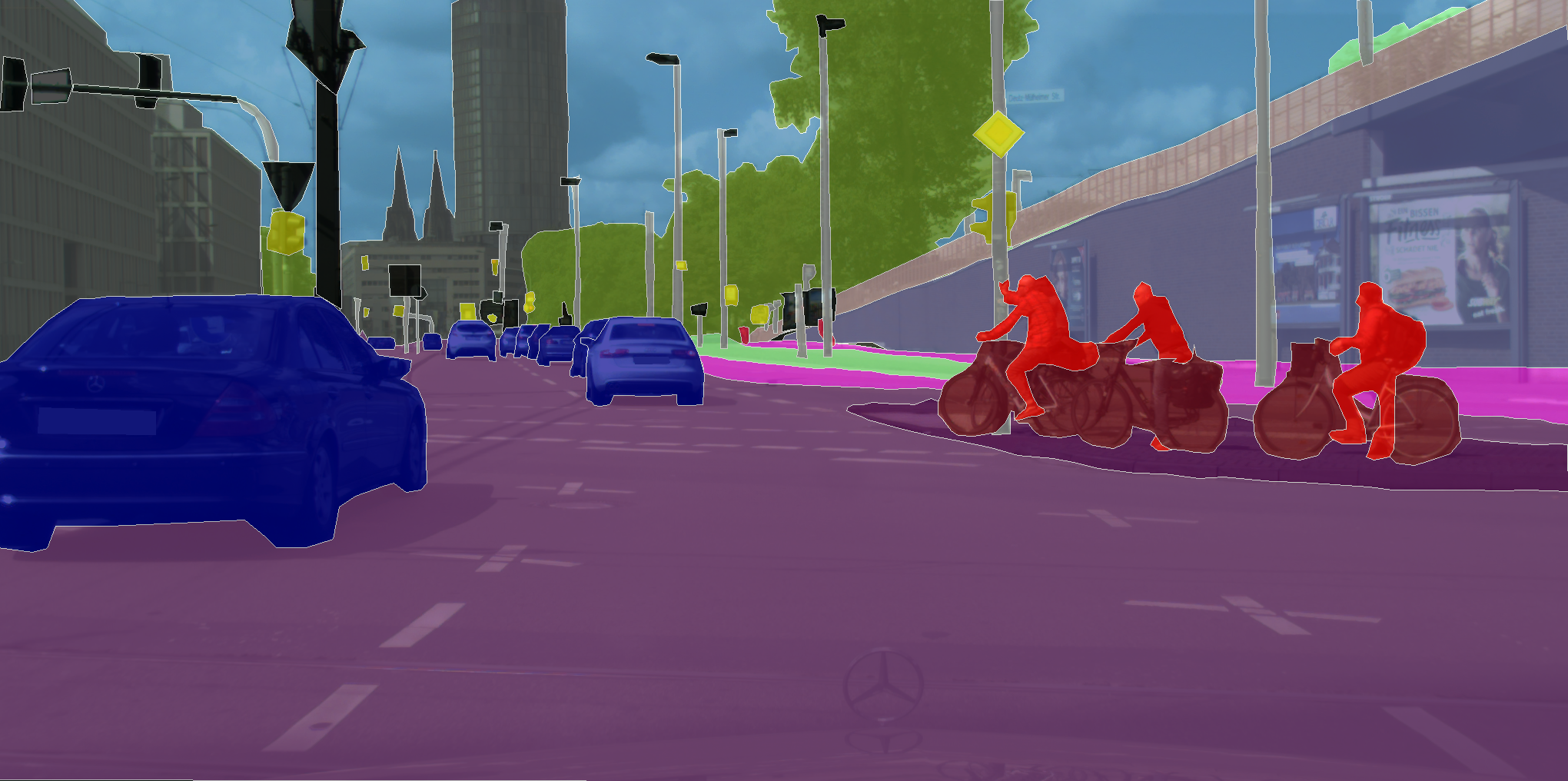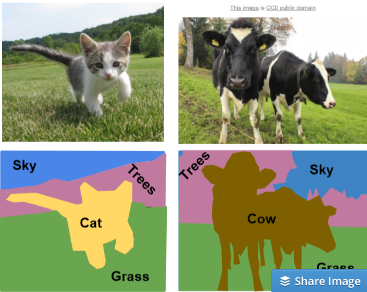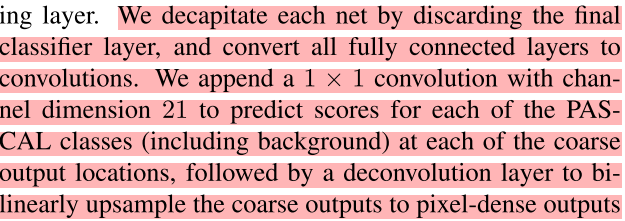Since AlexNet trounced other techniques at image classification at ILSVRC in 2012, deep learning has enjoyed growing popularity and become a favourite technique for solving many computer vision-related problems. Growing research in this field has been carried out over the last few years and we are now able to use deep neural networks to perform the following tasks, among many others:
- image classification
- object detection and localization
- semantic segmentation
The rest of this short post will discuss what semantic segmentation is and how we implemented and trained a well-known network architecture to be able to detect pixels on a image that belong to a road.
While image classification consists in assigining a single class to an image (e.g. dog/cat), semantic segmentation consists in assigning a class for each pixel within an image. In this fashion we are able to accurately identify objects of interest at pixel accuracy.
The image below shows examples of original images along with their segmented counterparts
We used the FCN network from the paper Fully Convolutional Networks For Semantic Segmentation. The variant of the FCN network employed is the FCN8 network, which is itself built on top of the venerable VGG16 architecture. Unlike VGG though, FCN has the following improvements:
- it can operate on images of different sizes
- it performs pixel wise classification as oppose to image-wide classification
One important charateristic in FCN is that there are no fully connected layers at the end of the base VGG16 network: they have been replaced by fully convolutional networks where a 1x1 filter is applied to the input feature map. This helps preservation the height and width dimensions of the feature map while also performing dimensionality reduction in the channel dimension of the feature map. The paper states it very clearly too:
As our network architecture is FCN8 we built extra layers by combining the fully convolutional layers that were created from VGG's pooling layers, just like in the paper.
Naturally, we also used transposed convolution (sometimes incorrectly named deconvolutions) to upsample the image to the point where it reaches its original size.
We conducted multiple experiments, with the following configurations:
- toggling batch normalization
- Using bigger kernel sizes in transposed convolution (i.e. upsampling)
- varying dropout levels
We obtain our best results by training the network in 75 epochs with no batch normalization and using the original kernel sizes from the FCN paper. A dropout keep percentage value of 0.65 was used. Moreover, learning rate and l2 regularization values of 0.001 were used. The optimizer used was Adam.
The images below show how our trained network performed against test images it had never seen:
To our surprise we obtained worse results by using batch normalization as can be shown by the images below:
This is probably due to the fact that we lose pixel level information since we subtract the mean and divide by the standard deviation of the batch. This technique is therefore not suitable for segmentation because we are working at pixel and not image level.
Interestingly, we also noticed less convincing results when we employed bigger kernel sizes for the upsampling layers. The segmented parts of the road are a lot more coarse : this is probably because a larger kernel would cover a greater portion of the image and has a bigger chance of misclassiying pixels. The images below illustrate what we are referring to:
We believe we can improve results further by trying the following:
- training for longer number of epochs while varying learning rate
- experimenting with more values of dropout
- training on a larger dataset (e.g. cityscapes)
- use a different base layer (e.g. ResNets)
As usual, I would like to thank the Udacity team for the great content and challenging project. Moreover, we are grateful to NVIDIA for working with Udacity on this module.









